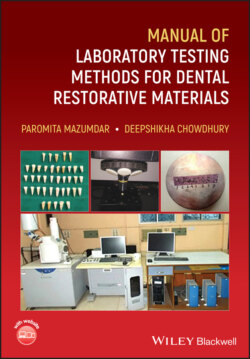Читать книгу Manual of Laboratory Testing Methods for Dental Restorative Materials - Paromita Mazumdar - Страница 21
1.7 Elastic Modulus
ОглавлениеThe modulus of elasticity, or measure of a material's stiffness, is also important in relation to anticipated longevity of a restoration. An elastic material (one with a low elastic modulus) will deform when a load is placed on it but will return to its original shape once the load falls below the elastic limit of the material. As a general rule, restorative materials need to be very stiff (high elastic modulus), so that under load the elastic deformation will be very small. An exception to this is in the Class V situation. Micro‐filled composite materials have a lower modulus of elasticity than hybrid composite materials; this may be why micro‐filled materials show higher retention rates in Class V cavities, given that they deform more readily as the tooth deforms at the cervical area under occlusal loading.
Models involving the use of springs and dashpots can be used to explain the elastic and viscoelastic behaviour of materials. When a spring, which represents an elastic material, is fixed at one end and a load applied at the other, it becomes instantaneously extended. When the load is removed, it immediately recovers its original length. This behaviour is analogous to that of a perfectly elastic material. The two things that characterize the material are firstly the perfect recovery after removal of the force and secondly the lack of any time dependency of either the deformation under load or the recovery after removal of the applied force. The extent of deformation under load is characterized by the modulus of elasticity of the material (analogous to the spring constant of the spring) (as shown in Figure 1.17).
